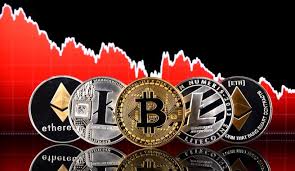
Understanding the Crypto Trading Framework
In the rapidly evolving digital landscape, understanding the Crypto Trading Framework visit website is essential for any trader looking to increase their knowledge and profitability in cryptocurrency markets. This article will delineate the core components of a successful crypto trading framework and lay down foundational strategies that you can apply right away.
What is a Crypto Trading Framework?
A crypto trading framework is a structured approach designed to help traders navigate the complexities of cryptocurrency trading. It incorporates various elements such as market understanding, risk management, trading strategies, and emotional resilience. By establishing a solid framework, traders can make informed decisions, mitigate risks, and ultimately enhance their trading performance.
Key Components of a Crypto Trading Framework
While the details may vary from one trader to another, a robust crypto trading framework generally includes the following components:
1. Market Analysis
Market analysis is crucial in identifying the right entry and exit points. It can be broadly divided into two categories:
- Fundamental Analysis: This involves analyzing the underlying factors affecting the value of a cryptocurrency, like technology, use case, team, market demand, and competition.
- Technical Analysis: This approach involves studying price charts, indicators, and patterns to predict future price movements. Tools such as moving averages, MACD, and RSI can provide insights into market trends.
2. Risk Management
No trading strategy is complete without effective risk management. Traders must define how much capital they are willing to risk on each trade, as well as set stop-loss and take-profit orders. Diversification is also a powerful risk management tool, spreading investments across multiple cryptocurrencies or assets.

3. Trading Strategies
There are various trading strategies that one might adopt. Here are a few popular ones:
- Day Trading: This strategy involves making multiple trades within a single day and closing positions by the end of the trading session.
- Swing Trading: This involves holding positions for several days or weeks to capitalize on short- to medium-term market movements.
- HODLing: A long-term strategy where traders buy and hold cryptocurrencies, betting that their value will rise over time.
4. Psychological Factors
Trading can be a highly emotional experience, and psychological factors play a significant role in a trader’s success or failure. Developing emotional discipline, avoiding impulsive decisions, and practicing patience are important traits for effective trading.
Building Your Own Crypto Trading Framework
Creating a personalized trading framework requires introspection and a clear understanding of your trading goals, risk tolerance, and personality. Here are some steps to get you started:
1. Define Your Goals
Ask yourself what you want to achieve through trading. Are you looking for short-term gains, or are you more interested in long-term investment? Understanding your goals helps shape your trading strategy.
2. Choose Your Trading Style

Based on your goals and lifestyle, determine what type of trader you want to be. Choose from day trading, swing trading, or long-term investing. Each style has its advantages and disadvantages.
3. Develop and Test Strategies
Create a series of strategies based on your market analysis. Testing these strategies on paper or through demo accounts is a useful way to gauge their effectiveness before committing real capital.
4. Create a Trading Plan
Even the best strategies can fail without a solid plan. Write down your trading rules, risk management protocols, and criteria for entering or exiting trades. Following a plan helps maintain discipline during volatile market conditions.
5. Stay Informed
Stay updated with news in the cryptocurrency space. Economic events, regulatory changes, and technological advancements can significantly impact your trading decisions.
The Importance of Continuous Learning
The cryptocurrency market is ever-changing. To stay competitive, it’s crucial to invest in your learning and adapt your framework as new trends emerge. Engage with online communities, read books, and follow leading crypto educators to keep your knowledge current.
Conclusion
In conclusion, developing a Crypto Trading Framework can significantly enhance your trading capabilities. By focusing on market analysis, risk management, personalization of strategies, and continuous learning, you can navigate the crypto market with greater confidence and resilience. Remember, success does not happen overnight—patience and practice are key.
